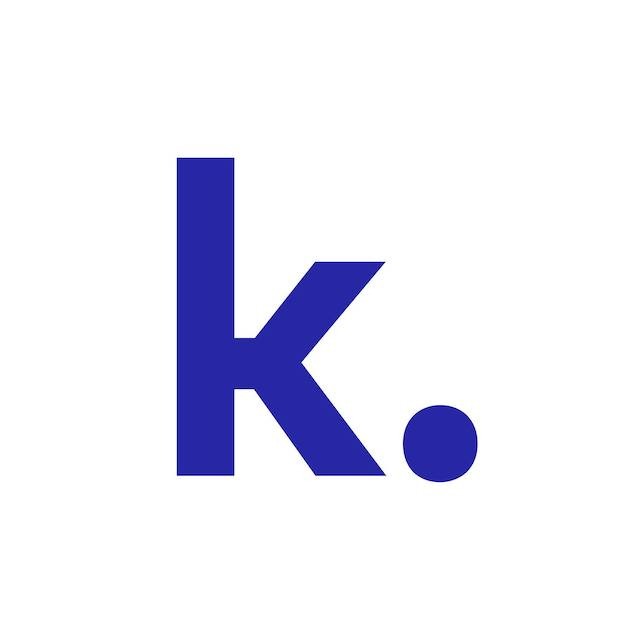Table of Contents
Front-End Developer is a very important position in Kambu. They have to be technically skilled and proficient and up-to-speed on the latest trends. To help us assess candidates, we came up with specific questions. In this blog, we share our front-end developer interview questions and answers.
What does a front-end developer do and why does it matter? Their role is to build elegant, convenient, responsive, and interactive interfaces accessible by many devices. They implement everything you see on your screen when you open up websites, web applications, or mobile apps.
In general, most candidates are confused about how to prepare and which type of questions they have to know before a front-end development interview.
This article presents some advice and a description of a front-end interview. We will show you 8 technical questions we always ask in Kambu and we hope it will help you to get your dream job!
Note that we present a huge focus on React. That’s because React is the JavaScript library we currently use the most.
Article co-written by the front-end team leader.
What to Expect During a Front-End Job Interview?

These are definitely the most important areas you should expect during a front-end interview:
- Very good understanding of JavaScript
- Good knowledge of frameworks/libraries
- Writing correct HTML5 and implementation of design in CSS
- Good communication in English
- Practical knowledge of browsers
- Experience working with Rest APIs
- Experience in Git repository
- Experience in writing tests
8 Front-End Developer Interview Questions Answered

Let’s see what are the important front-end developer interview questions that candidates need to be prepared for.
A forewarning: we gave some tips for “Best answers” to front-end developer interview questions.
But there’s no perfect guide.
The best answers are those you come up with yourself, based on experience.
That’s why we marked these below with * (best answers*).
1. What do you know about Flux? Have you ever used it?
Why this question: It is a very important question because we use redux everywhere to manage the state of our applications. If you know Flux it will be easy to understand and join every project.
Answer: Flux is a kind of architecture that complements React as a view and follows the concept of the Unidirectional Data Flow model.
The pattern allows the safe use of data in several places of the application without risking their contamination. In the pattern, we can distinguish Action, Dispatcher, Store, and View.
Best answer*: The candidate should discuss in detail the components of the pattern and their interrelationships.
2. Why use middleware in redux? What is redux-thunk?
Why this question: We use the redux-thunk middleware in every application too.
Answer: The most common use case for middleware is to support asynchronous actions without much boilerplate code or a dependency on a library like Rx. It does so by letting you dispatch async actions in addition to normal actions.
For example, redux-thunk lets the action creators invert control by dispatching functions. Proper use allows abstracting the application state logic from the component level to the appropriate services and actions.
Best answer*: Great if you say what can be achieved with redux-thunk and give a real-world example.
3. What are the differences between class and function components? Can we use both for the same purpose?
Why this question: In the past, each of these types was used for different purposes. Now that is no longer the case, but the question allows us to evaluate knowledge of the new library API relative to the older one which can be found in applications we still maintain. People who are only familiar with the new API can feel lost when they see the class component.
Answer: A functional component is just a plain JavaScript function that accepts props as an argument and returns a React element. A class component requires you to extend from React. Component and create a render function that returns a valid element.
Best answer*: Ideally, you should also talk about the changes that have occurred in the library API and caused the blurring of the differences between these types of components. Naturally, it’s all about Hooks and the ability to plug into a component’s lifecycle
4. What are hooks in React? Which React hooks do you use?
Why this question: It is very good if the candidate has experience with the new React API. We use hooks in all new and supported applications
Answer: Hooks are functions that let you “hook into” React state and lifecycle features from function components. React provides a few built-in Hooks like useState. You can also create your own hooks to reuse stateful behavior between different components.
Best answer*: This question refers to the previous one. It checks knowledge of the new React API and that’s how people use hooks in React. You should be able to give examples of Hooks and how to use them.

5. Describe the component lifecycle
Why this question: Component lifecycle and its methods are an essential part of creating an application in React.
It is important for the programmer to have an idea of what is happening to the component during its lifetime and correctly use the built-in methods that allow us to execute our logic at the right time in the component’s life.
Answer: React Component goes through several phases of life: Mounting, Updating, and Umounting.
We can describe the lifecycle as a series of methods that are triggered at the appropriate phases of a component’s life (e.g. componentDIdMount, render).
During mounting, the component is created and placed in the DOM. The update phase occurs when the state of a component or its props changes. The last phase – unmounting – is the phase where the component is destroyed and removed from the DOM tree.
Best answer*: You should be able to list the methods for each phase of the component life with examples of use. You should also be able to list the methods of each phase of a component’s life with examples of use. Finally, it’s important to know how to use Hooks to hook into the right part of the cycle.
The new library API introduced quite a few changes to the lifecycle methods. Some of them have been deprecated in favor of better alternatives. It’s better to know the specific differences between the new and old API but it’s not a must-have.
6. What is a higher-order component in React with an example? Do you know an alternative way to write HOC?
Why this question: This question allows us to evaluate the candidate’s experience. Beginners usually have little experience with HOC.
Answer: Higher-Order Components are not part of the React API. They are the pattern that emerges from React’s compositional nature. A higher-order component converts a component into another component. An example of HOCs is Redux’s connect.
Best answer*: It’s very important to say that HOC allows us to define repeating logic in one place and use it in many components. An alternative to HOC is to create your own hook with reusable logic.

7. What is Virtual DOM? How to optimize lists in React?
Why this question: Every person using React in their professional work should know the UI update mechanism implemented in this library.
Answer: Virtual DOM is an in-memory representation of a real Document Object Model. React updates the VDOM when there is a change in the component state. Then the diffing algorithm is used to compare the differences between the current Virtual DOM and its previous version.
We optimize lists using a special “key” prop, which gives the element a stable identity. Keys help React identify which items have changed, are added, or are removed.
Best answer*: It’s great if you can tell why VirtualDOM was created at all and what benefits come from using it.
8. How can we handle asynchronous code?
Why this question: This question checks not only if but also in what ways candidates know how to handle async operations.
Answer: There are several ways to handle asynchronous code in javascript: callbacks, Promises, and async/await. Initially, such operations were handled by callbacks, i.e. functions that are called when the result of our asynchronous operation is ready. Unfortunately, the code often becomes unreadable when it is necessary to execute one asynchronous operation after another (the dreaded callback hell).
Promises work similarly to callbacks, but we have a few differences here. First, we don’t need to add a callback to Promise, Promise has its own functions that are called when our operation succeeds or fails. The second difference is the ability to chain dependent asynchronous operations instead of nesting consecutive callbacks as in the case of the first method.
Async / await is syntactic sugar on promises which makes asynchronous code look more like synchronous which is more readable to the programmer. The code is actually handled in the same way as in the case of regular promises.
Best answer*: The candidate should be able to provide an example of an asynchronous operation and describe how to handle errors in the listed asynchronous code handling methods. It’s best if you know how to perform several such operations at the same time.
Conclusion – Beyond Technical Skills

We hope this list of front-end interview questions with answers was enlightening.
Also, remember that it is not all about your technical skills. Your success during the interview will also depend on your state of mind and the first good impression you will make.
Besides technical questions, we will also ask some questions about your soft skills, motivation, and expectations.
Don’t try too hard to find the best answer, nobody has to be good at everything. Also, come up with a list of questions you want to ask about the company and your role. You will show your interest and motivation to get this job position. Good luck!




